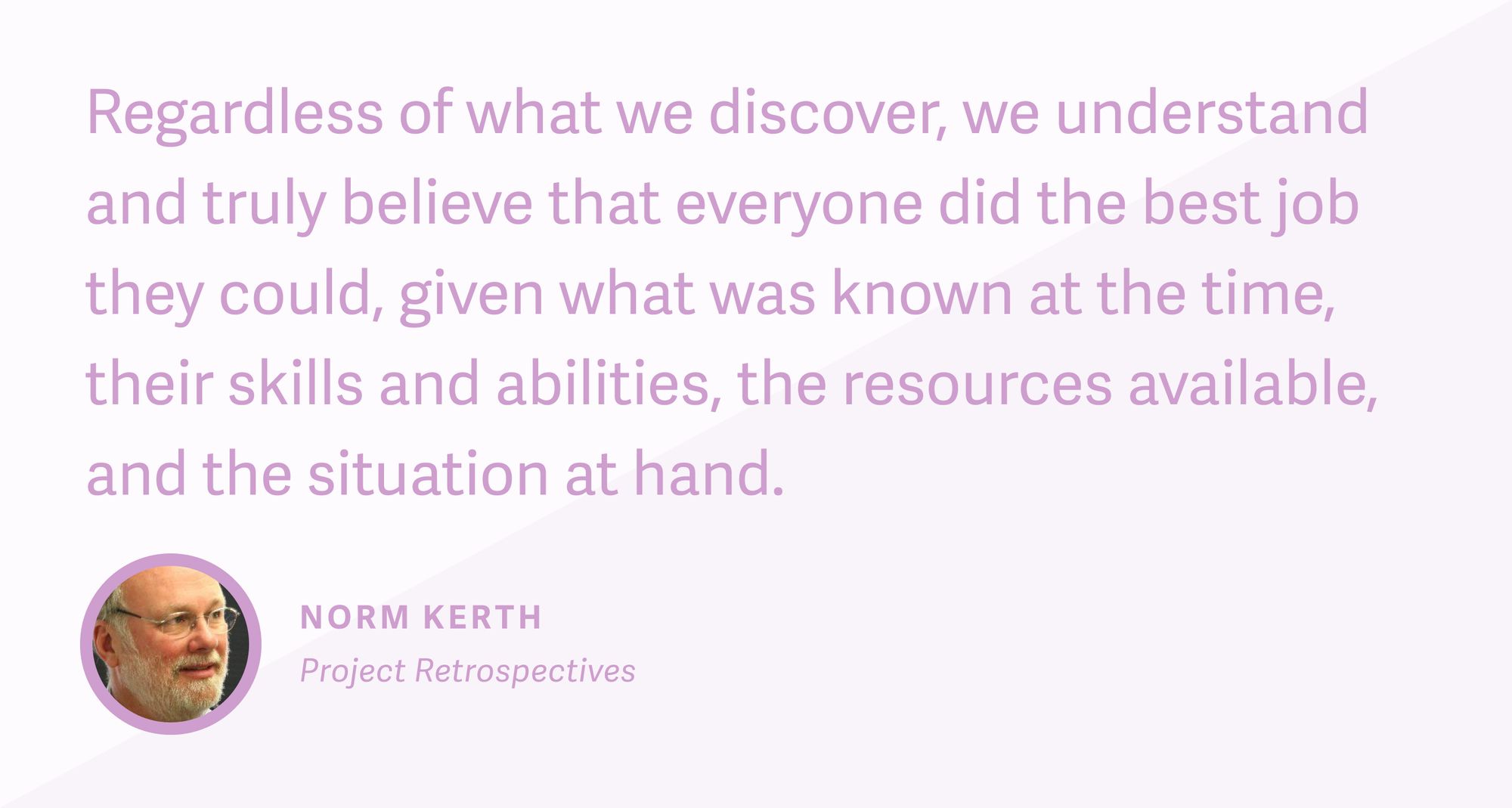
Until you retro, you haven't truly finished.
Retrospectives review successes as deeply as setbacks (unlike post-mortems, which prevent failures from recurring). Through thoughtful retros, we can learn as much from success as we do from failure.
Retros also create space for teams to feel heard and for leaders to demonstrate action. This is critical, as more than 40% of employees withhold ideas out of a sense of futility.
Here's how we retro at Superhuman…
1. Engage with the Prime Directive
Like many startups, our retros are guided by Norm Kerth's Prime Directive:

But stating the Prime Directive isn't enough: you must communicate why it matters.
The Prime Directive acknowledges that processes are generally at fault, rather than people. Believing in everybody's sincere effort isn't just about good will — it creates the optimal conditions to stimulate learning. When we blame others, we learn less and perform worse.
2. Gather input synchronously and asynchronously
Retros generate a lot of information, but you need both synchronous and asynchronous communication to understand it fully.
Synchronous conversation will generate a holistic overview. It is also an excellent barometer for team morale.
How to do this: Schedule a retro within 2 weeks of the project ending. Memories fade surprisingly fast, so encourage folks to note down their thoughts — both during the project and immediately after.
Asynchronous conversation will generate candid insights and detailed data. It also increases participation and prevents groupthink.
How to do this: Before the retro, invite input from across the business — the most productive retros air feedback from every team involved. Inside the retro, include 10–15 minutes for silent brainstorming.
3. Separate brainstorming from analysis
Most retros ask 3 questions: What did we do well? What did we do less well? And what should we do differently next time?
These questions are good. However, we can do better with a little more structure.

How to do this: Structure your agenda as follows…
- Brainstorm: Recap the project's goals and outcomes, then ask the team to write down discussion topics — what went well, what didn't, what they'd do differently. Encourage them to include how they feel (the Emotion Wheel can be a useful prompt). Everyone submits their notes without including their name.
Why you should do this: Anonymous input reduces evaluation apprehension, and increases objective judgement. - Analysis: Review the input, group similar topics, and ask the team to vote for the most important ones (we use EasyRetro). Dig deep into the highest ranked topics using the 5 Whys.
Why you should do this: The 5 Whys examine every stage in a chain reaction, identifying the root causes of both success and failure. - Action: Immediately assign accountable owners to the most important actions.
Why you should do this: Closing the loop increases the likelihood of your team speaking up in future, and creates a culture where ideas are enthusiastically shared.
Done right, retros will energize your team and unlock brilliant ideas.


